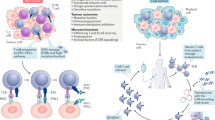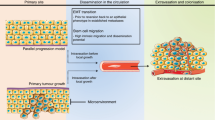Abstract
The tremendous progress achieved in understanding the molecular basis of cancer, was unfortunately not followed by a mutual improvement in the morbidity and mortality of adult cancer. In contrast, the success rate achieved in paediatric oncology has increased significantly during the past 30 years, and more than two-thirds of the children with cancer can now be cured. p53 has been shown to have a central role on apoptosis in various cells. As apoptosis is a final common pathway for much of our anti cancer therapy, resistance to apoptosis due to a normal activity of p53 is an important mechanism of tumor resistance and treatment failure. Contrary to the findings in most adult tumors, where about 50% of the tumors lack p53 activity, the rate of p53 mutations in childhood cancer is surprisingly low. This may be the key to the much better prognosis of children with cancer. In most adult tumors, multiple genetic events, between five and seven, are usually involved. The oncogenes involved in such tumors usually represent those located upstream of the nuclear transcription factors. In most paediatric tumors, in contrast, the initiating event is the activation of nuclear transcription factors secondary to chromosomal translocations. It can be speculated that multiple events activating various components of the signal transduction machinery are needed for tumorigenesis, and hence the evolution and progression of such tumors is slow. Moreover, if the malignant cell has to accumulate multiple mutations, the chances of crippling the apoptotic mechanism are higher. Genomic instability evidenced by microsatellite variation has been found in colon, pancreas, breast, liver and ovarian adult tumors, and not in paediatric tumors. As multiple somatic mutations are needed for the initiation and progression of the common adult malignancies, inherent genomic instability can dispose to accumulation of multiple mutations. All these molecular interactions are discussed with relevance to the difference between non-curable, mostly adult tumors, and curable, mostly paediatric tumors.
Similar content being viewed by others
References
Howley, P.M. (1995) Viral carcinogenesis. In J. Mendelshon, P.M. Howley, M.A. Israel and L.A. Liotta (eds)The Molecular Basis of Cancer, pp. 38–85. Philadelphia: WB Saunders.
Marx, J. (1994) DNA repair cornes into its own.Science 266, 728–30.
Buck, C.A. (1995) Adhesion mechanisms controlling cell-cell and cell-matrix interactions during the metastatic process. In J. Mendelshon, P.M. Howley, M.A. Israel and L.A. Liotta (eds)The Molecular Basis of Cancer, pp. 172–205. Philadelphia: WB Saunders.
Folkman, J. (1995) Tumor angiogenesis. In J. Mendelshon, P.M. Howley, M.A. Israel and L.A. Liotta (eds)The Molecular Basis of Cancer, pp. 206–32. Philadelphia: WB Saunders.
Lange,T. (1994) Activation of telomerase in a human tumor.Proc. Natl. Acad. Sci. USA 91, 2882–5.
Beardsley, T. (1994) A war not won.Scientific American 118–126.
Robison, L.L. (1993) General principles of the epidemiology of childhood cancer. In P.A. Pizzo and D.G. Poplack (eds)Principles and Practice of Pediatric Oncology, 2nd edn, pp. 3–10. Philadelphia: JB Lippincott.
Greaves, M.F. (1993) Stem cell origin of leukemia and curability.Br. J. Cancer 67, 413–23.
Williams, G.T. and Smith, C.A. (1993) Molecular regulation of apoptosis: genetic controls on cell death.Cell 74, 777–9.
Raff, M.C. (1992) Social controls on cell survival and cell death.Nature 356, 397–400.
Wyllie, A.H. (1980) Glucocorticoid-induced thymocyte apoptosis is associated with endogenous endonuclease activation.Nature 284, 555–6.
Gavrieli, Y., Sherman, Y. and Ben-Sasson, A. (1992) Identification of programmed cell deathin situ via specific labeling of nuclear DNA fragmentation.J. Cell. Biol. 119, 493–502.
Ellis, R.E., Yuan, J. and Horvitz, H.R. (1991) Mechanisms of functions of cell death.Ann. Rev. Cell Biol. 7, 663–98.
Yonish-Rouach, E., Resnitzky, D., Lotem, T., Sachs, L., Kimchi, A. and Oren, M. (1991) Wild type p53 induces apoptosis of myeloid leukemia cells that is inhibited by interleukin 6.Nature 353, 345–7.
Clarke, A.R., Purdie, C.A., Harrison, DJ., Morris, R.G., Bird, C.C., Hooper, M.L. and Wyllie, A.H. (1993) Thymocyte apoptosis induced by p53-dependent and independent pathways.Nature 362, 849–52.
El-Deiry, W.S., Tokino, T., Velculescu, V.E., Levy, D.B., Parsons, R., Trent, J.M., Lin, D., Mercer, W.E., Kinzler, K.W. and Voglestein, B. (1993) WAF1, a potential mediator of p53 tumor suppression.Cell 75, 817–25.
Pines, J. (1994) Cell cycle. p21 inhibits cyclin shock.Nature 369, 520–1.
Kastan, M.B., Zhan, Q., El-Deiry, W.S., Carrier, F., Jacks, T., Walsh, W.V., Beverly, S.P., Vogelstein, B. and For-ance, A J. (1992) A mammalian cell cycle checkpoint pathway utilizing p53 and GADD45 is defective in ataxia- telangiectasia.Cell 71, 587–97.
Caelles, C, Helmberg, A. and Karin, M. (1994) P53 dependent apoptosis in the absence of transcriptional activation of p53 target genes.Nature 370, 220–3.
Harris, C.C. and Hollstein, M. (1993) Clinical implications of the p53 tumor-suppressor gene.N. Eng. J. Med. 329, 1318–27.
Stretch, J.R., Gatter, K.C., Ralfkiaer, E., Lane, D. and Harris, A.L. (1991) Expression of mutant p53 in melanoma.Cancer Res. 51, 5976–9.
Takahashi, T., Suzuki, H., Hida, T., Sekido, Y., Ariyoshi, Y. and Udea, R. (1991) The p53 gene is very frequently mutated in small-cell lung cancer with a distinct nucleotide substitution pattern.Oncogene 6, 1775–8.
Fearon, E.R. and Voglstein, B. (1990) A genetic model for colorectal tumorigenesis.Cell 61, 759–67.
Sidransky, D., Von Eschenbach, A., Tsai, Y.C., Jones, P., Summerhayes, I., Marshall, F., Paul, M., Green, P., Hamilton, S.R., Frost, P. and Vogelstein, B. (1991) Identification of p53 gene mutations in bladder cancers and urine samples.Science 252, 706–9.
Isaacs, W.B., Carter, B.S. and Ewing, C.M. (1991) Wild-type p53 suppresses growth of human prostate cancer cells containing mutant p53 alleles.Cancer Res. 51, 4716–20.
Crook, T., Wrede, D., Tidy, J.A., Mason, W.P., Evans, D.J. and Vousden, K.H. (1992) Clonal p53 mutation in primary cervical cancer: association with human-papillomavirus- negative tumors.Lancet 339, 1070–3.
Fisher, D.E. (1994) Apoptosis in cancer therapy: crossingthe threshold.Cell 78, 539–42.
Lowe, S.W., Bodis, S., McClatchey, A., Remington, L., Ruley, H.E., Fisher, D.E., Housman, D.E. and Jacks, T. (1994) p53 status and the efficacy of cancer therapyin vivo.Science 266, 807–10.
Damerron, K.M., Volpert, O.V., Tainsky, M.A. and Bouck, N.P. (1994) Control of angiogenesis in fibroblasts by p53 regulation of thrombospondin.Science 265, 1582–4.
Chin, K.V., Ueda, K., Pastan, L. and Gottesman, M.M. (1992) Modulation of activity of the promoter of the human MDR1 gene by Ras and p53.Science 255, 459–62.
Korsmeyer, S.J., Shutter, J.R., Veis, DJ., Merry, D.E. and Oltvai, Z.N. (1993) Bcl-2/Bax: a rheostat that regulates an anti-oxidant pathway and cell death.Sem. Cancer Biol. 4, 327–32.
Offit, K., Lo Coco, F., Louise, L., Parsa, N.Z., Leung, D., Portlock, C, Ye, B.H., Lista, F., Filippa, D.A., Rosen-baum, A., Landanyi, M., Jhanwar, S., Dalla-Favera, R. and Chaganti, R.S.K. (1994) Rearrangement of the bcl-6 as a prognostic marker in diffuse large cell lymphoma.N. Eng. J. Med. 331, 74–80.
Wada, M., Bartram, C.R., Nakamura, H., Hachiya, M., Chen, D.L., Borenstein, J., Miller, C.W., Ludwig, L., Hansen-Hagge, T.E., Ludwig, W.F., Reiter, A., Mizoguchi, H. and Koeffler, P. (1993) Analysis of p53 mutations in a large series of lymphoid hematologic malignancies of childhood.Blood 82, 3163–9.
Saylors, R.L., Sidransky, D. III and Friedman, H.S. (1991) Infrequent p53 gene mutations in medulloblastomas.Cancer Res. 52, 4721–5.
Hickman, J.A. and Pritchard, J. (1994) Why does stage 4s neuroblastoma regress spontaneously?Lancet 344, 869–70.
Tronick, S.R. and Aaronson, S.A. (1995) Growth factors and signal transduction. In J. Mendelshon, P.M. Howley, M.A. Israel and L.A. Liotta (eds)The Molecular Basis of Cancer, pp. 117–140. Philadelphia: WB Saunders.
Fearson, E.R. (1995) Molecular abnormalities in colon and rectal cancer. In J. Mendelshon, P.M. Howley, M.A. Israel and L.A. Liotta (eds)The Molecular Basis of Cancer, pp. 340–57. Philadelphia: WB Saunders.
Rabbitts, T.H. (1994) Chromosomal translocations in human cancer.Nature 372, 143–9.
Knudson, A.G. (1993) Antioncogenes and human cancer.Proc. Natl. Acad. Sci. USA 90, 10914–21.
Sawyers, C.L. and Denny, C.T. (1994) Chronic myelomo-nocytic leukemia:Tel-a-kinase what it’s all about.Cell 77, 171–3.
Darnell, J.E., Kerr, I.M. and Stark, G.R. (1994) Jak-STAT pathways and transcriptional activation in response to IFNs and other extracellular signalling proteins.Science 264, 1415–21.
O’Brien, C. (1994) Missing link in Insulin’s path to protein production.Science 28, 542–3.
Murray, A. (1994) Cell cycle checkpoints.Curt. Op. Cell. Biol. 6, 872–6.
Elledge, S.J. and Harper, J.W. (1994) Cdk inhibitors: on the threshold of checkpoints and development.Curt. Op. Cell Biol. 6, 847–52.
Kamb, A., Gruis, N.A., Weaver, F.J., Liu, Q., Harshman, K., Tavtigian, S.V., Stocket, E., Day, R.S., III, Johnson, B.E. and Skolnick, M.H. (1994) A cell cycle regulator potentially involved in genesis of many tumor types.Science 264, 436–40.
Author information
Authors and Affiliations
Rights and permissions
About this article
Cite this article
Toren, A., Amariglio, N. & Rechavi, G. Curable and noncurable malignancies:Lessons from paediatric cancer. Med Oncol 13, 15–21 (1996). https://doi.org/10.1007/BF02988837
Issue Date:
DOI: https://doi.org/10.1007/BF02988837




